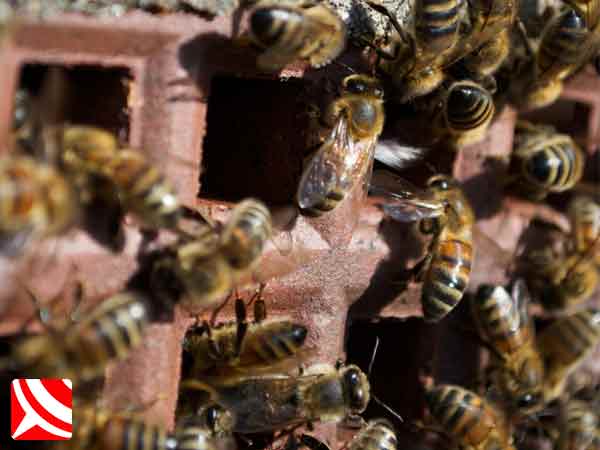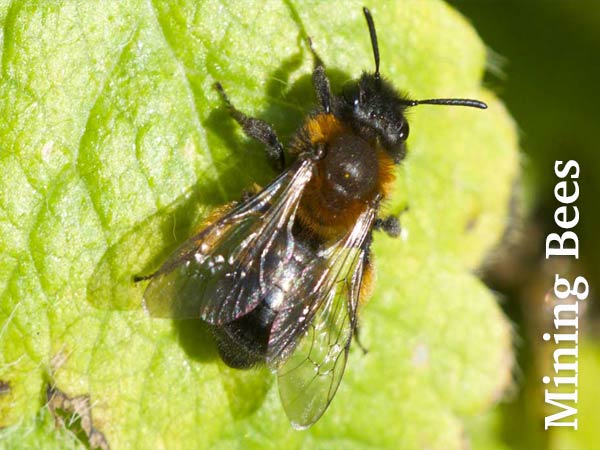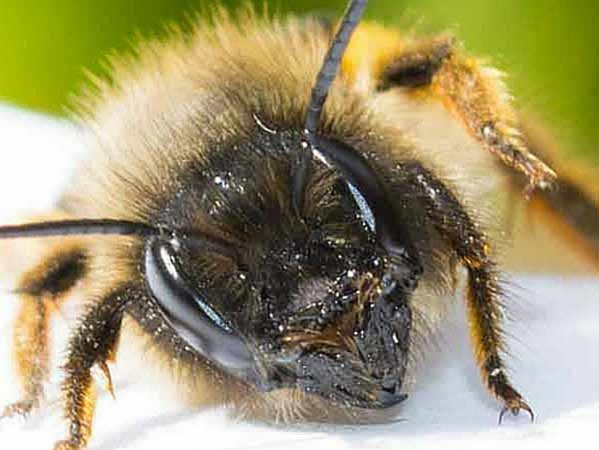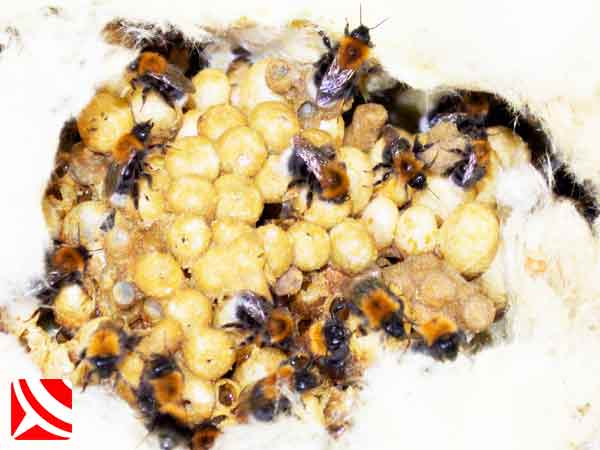Why Are Bumble Bees In Your Loft?
Bumble bees of a number of species are common in loft spaces and especially in loft spaces that containing significant amounts of attic insulation.
There are many different kinds of insulation, and sometimes the bees enter your roof but nest in the wall cavities where fibre fill cavity wall insulation is perfect for a bumble bees nest.
Modern insulation materials might be green, but they are also much more suitable for nesting than the alternatives available in the bumble bees external environment.
Tree bumble bees, in particular, prefer nesting at height and enjoy loft spaces, where they nest directly on ceilings because the ceiling is almost always warm, being heated from below.
You can imagine the scenario: The Queen bumble bee enters a relatively undisturbed, cosy, warm loft with underfloor heating and a well-insulated covering of attic insulation. Why wouldn't bumble bees want to nest there?
Where Do The Bumble Bees Come From?
Bumble bees are found widely in the environment and in the UK we have approximately 24 species of bumblebee. Bumblebees usually nest in the base of trees and hedges, but are also found in compost bins, bird boxes and BBQ's!
As already mentioned above, our homes are increasingly more inviting and for the most part safer from predation or disturbance.
How Many Bumble Bees Are In Your Roof?
Bumble bee colonies begin life as a small number of cells built by a lone queen, but over time some nests could contain many hundreds and even thousands of bumblebees.
The mechanism behind this falls into two methods. The first method is year on year growth. Bumblebee nests don't completely die out like those of wasps.
Throughout the winter months the nest remains partially active and as spring arrives the colony springs back into life. The largest of the nests we've seen was the size of a dustbin lid and contained an estimated 1500 insects!
The second and most common method of growth is by way of budding. Budding is a process where the colonies produce multiple queens that establish new colonies in the very same loft or attic space at the same time. We have seen dozens of instances where lofts and attic spaces contain three or four active tree bumble bee colonies.
Do Bumble Bees Sting?
Bumble bees do sting, and we have had a few instances involving dogs where the sting has almost proved fatal! The sting does not have the barb found on the sting of a honey bee, helping bumble bees to sting multiple times without fear.
Although the stings have proven dangerous to pets, we have seen no evidence that the stings are dangerous to humans. We get a dozen or so people each year that are attacked after disturbing bumble bee colonies, and in many cases the biggest risk was the panic.
Many of those stung each year are builders and roofers. as they begin stripping tiles from roofs while up on tall ladders or scaffolding, they uncap a colony of bees that can become very aggressive and will pursue them along the roof. This always causes great amusement to the people watching, but must be terrifying if you are the one being chased and stung!
How Many Times Can A Bumble Bee Sting?
Bumble bees do not have the same barbed sting as a honey bee. The big difference between the sting of the bumble bee and that of the honey bee is the barbs of the honey bees stinger.
When a bumble bee decides to sting you, its sting does not get stuck in your skin. With this in mind, you should always assume that bumble bees can and will deploy its sting multiple times in the defense of the colony and its self.
Having the capacity to sting multiple times places the bumble bee firmly in the territory of the paper wasps. The biggest takeaway here is to never underestimate a bumble bee colony.
Bumblebees might look fluffy and beautiful while buzzing around the flowers in your garden, but are remarkably different when acting as a colony. Another important feature of bumble bees is their love of your face. Over a ten year period, it has become abundantly clear that bumble bees attack the head and face more often than any other body part.
Will The Bumble Bees Leave?
Bumble bees seem to stay fairly active in one place for three to five years if left alone. Beyond this time scale, we have not seen any continuing activity and the bee nests seem to die out and are often helped on their way by wax moth larvae that suffocate the colonies with dense, rubbery silk.
How Long Will Bumble Bee Nests Live?
Bumble bee colonies remain active for a single season and in some cases five years. This is sometimes hard to prove, so we stand to be corrected.
Can Bumble Bee Nests Be Moved?
Bumble bee nests found externally can be easily moved, but those discovered inside your home are usually almost impossible to move safely or successfully.
The danger of transferring a live colony of unhappy bees through the occupied areas of someone's home is not a procedure we are insured for, and a procedure we have not yet found anyone willing to take on. Loft and attic spaces can be very dangerous places to upset a large colony of bees.
Is It Illegal To Kill Bumble Bees?
The control of bumble bees is not illegal in the UK, but we are very careful how we manage bee control services to ensure that all concerned, remain safe during the procedure for a home that is bumble bee free for longer.
Is It Difficult To Eliminate Bumble Bees?
Bumble bees are tough to kill. This is because in our experience bumble bees seem to have a sixth sense when it comes to pesticides.
They commonly re-route activities. We have seen numerous instances where bumble bees avoid insecticides very deliberately. The dense hairs on the outside of the bees bodies also seem to have some advantage by keeping the pesticides used away from the surface of the bees body.
The current record for the number of treatment visits needed to destroy a large and hard to get to colony covered under our guaranteed service is six treatments.
How Are Bumble Bees Controlled?
Bumble bees are treated in a variety of ways - sprays and dusts are the most common forms of treatment. These usually leave the colony incapacitated in a few hours, but for those colony's that are harder to get to it can take a few weeks!





